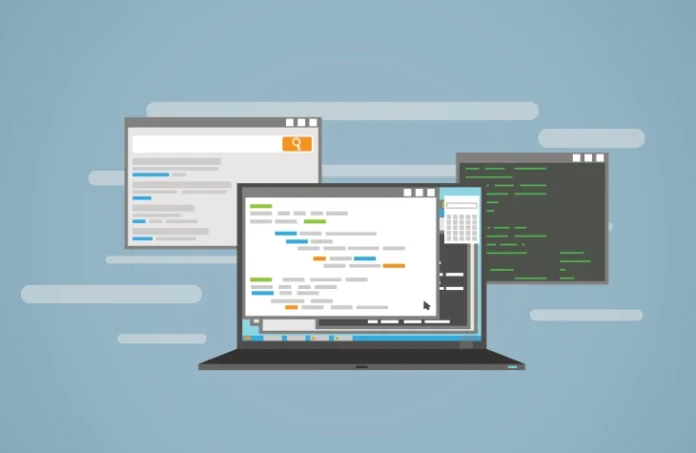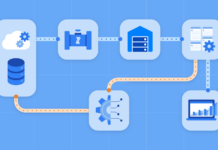Today’s software testers have more tools at their disposal than ever before. This means you need a robust knowledge of all the different kinds of cross browser testing tools so you can identify specific challenges and disadvantages and choose the best testing solution for your project. Furthermore, cross browser testing is the most common and desirable form of testing in today’s industry. With cross browser testing, you can maximize the efficiency of your testing staff, expand your testing coverage, and test faster than ever before. Cross browser testing can be performed by running both automated tests and manual tests. The trick is knowing how to orchestrate a comprehensive cross browser testing strategy in order to take full advantage of its benefits. Moreover, the rapid-fire pace of innovation means that software is more complex and fragmented than ever. With continuous testing trends upending traditional software development methodologies, it has never been more important to have a wide range of testing tools in your arsenal.
Introduction to Cross-Browser Testing

Testing your app across many browsers helps to ensure speed, reliability and interface between your app and the user. Cross browser testing is crucial for a good user experience of your application, especially with the rise of mobile browsing. Furthermore, because of the different ways of rendering code, cross-browser testing is an important part of a web application’s quality assurance plan. The proliferation of different web browsers and operating systems makes consistent cross-browser development difficult. Each browser implements the Web standards slightly differently, which means that even minor differences in the way your code is interpreted by a browser can have a large impact on how the site looks and operates. To be precise, cross browser testing is a vital part of website development, but it is often overlooked by both front-end and back-end developers. Every software project should include some basic cross browser testing to ensure that the website will function properly on various devices and web browsers, including mobile browsers.
Trends in Cross Browser Testing

Continuous Software Testing is an essential process in the software development life cycle that ensures premium software quality. Testing is essential because bugs, errors and flaws are always present in programs and the only way to be sure you have removed or fixed all these problems is by testing. Clearly, the need for speed drove innovations that now stand poised to reshape how testing procedures are carried out from artificial intelligence and distributed computing to blockchain architecture and machine learning algorithms.
1. Robotic Process Automation
Although the role of a software tester has been in existence for a long time, it has now become more of an autonomous and independent role than ever before. Since the emergence of RPA as one of the most widely used software testing tools, software testers are now responsible for more than their traditional testing jobs. Till date, RPA was mainly used to automate functional testing. However, as per surveys conducted by various IT market researchers and experts, gradually this trend is changing with increased adoption by software companies and testers. Robotic process automation (RPA) encompasses a set of technologies that provide seamless control over the business processes. Robotic process automation is used for simulating human actions. The use of this technology helps in reducing the transaction cost by removing the dependency of developers and other human resources.
2. In-Sprint Test Automation

In-sprint testing, also known as in-sprint automation, is an agile testing methodology that allows testers to perform automated testing along with the development teams during the same sprint. It works in the same way as exploratory testing, which means the tests are not planned and performed at any specific time but whenever a need arises. Testers can conduct their tests by leveraging the infrastructure and resources provided by developers within a sprint window. This method reduces the wait time until the end of the test cycle when testers do not get access to production systems or any other system they need such as databases. In-sprint test automation is not just limited to automating tests but also includes manual or scripted operations. Furthermore, this trend is useful for the testers if they are looking to save time and money, reduce defects and improve quality.
3. Artificial Intelligence Testing

Artificial intelligence software testing has been in use since the 1990s, with many major technology companies developing their own autonomous systems. On a smaller scale, various teams at different organizations are using AI to automate the creation of machine testing code by creating customized machine intelligence testers, cutting down on developer time. Clearly, AI is the new frontier in software testing. The growth of artificial intelligence is set to revolutionize many aspects of society in the coming years. The focus on AI as a tool for improving human decisions and capabilities means that it is only a matter of time until we achieve autonomous agents capable not just of performing simple tasks such as estimating whether a number is even or prime, but even completing complex analytical tasks such as stock trading. Demand for software testing AI will continue to grow as organizations realize the benefits of AI, such as reduced costs, efficiency and increased speed. As a result, organizations will look to hire experts in the field of AI to develop software that is both revolutionary and efficient.
4. Tracking Metrics
Tracking metrics are measurements of functionality, performance and efficiency in your software. They can be used for gauging the efficiency of software at any point during the process. Tracking metrics help in maintaining a balance between performance, functionality and speed. Furthermore, setting up metrics is an important part of making sure your software is being tracked and its progress is being identified. Since the job of software developers is to turn out useful, useful, and successful pieces of software, it is important that they be able to identify the areas where their product hasn’t excelled. Metrics help them identify what areas they can improve upon before they put their finished product on the market. Precisely, Goals and metrics help you track your progress from project start to launch.
5. Scriptless Automation Testing

Since the beginning of Agile, people have begun using tools and techniques to automate development tasks such as compiling code or running builds. However, even with automation and all the new technologies available, some routine tests need to be executed manually. This is where Scriptless Automation Testing comes in. Scriptless automation testing allows for the creation of automated functional tests without any writing of scripts. This is a boon to QA teams because it can be used even by members with minimal technical know-how. It is the process of using software, such as Appium or Selendroid, to mimic real user behavior and test an application on a variety of devices. As opposed to traditional methods, script less automation can be set up easily by non-technical people, taking only a few weeks to build.
6. Security Testing
Testing security on software is a serious business. It’s not enough to have one test to evaluate the application because what needs to be done is make sure that security passes every single time. If a program ever gets hacked, even once, then you may never get it back. Security testing tools are really effective in determining if there are any holes within the software that can cause problems or glitches before it goes into the public eye. Testing is aimed at catching vulnerabilities in software and other aspects of an application, not only for security but for other purposes as well. Examples of vulnerabilities include missing logic to prevent errors in the application, incorrect input validation, authentication issues, code-level errors such as buffer overflows, SQL injection flaws and XML injection flaws.
7. DevOps

DevOps is a software testing trend that applies principles from agile methodologies in a new way. In essence, DevOps provides continuous testing by taking any code that’s input and immediately building it and putting it into production. This reduces the development time for new software by catching mistakes as they happen rather than months down the road. The idea is to accelerate development by making small changes in short cycles with rapid integration and deployment. DevOps gets its economy of action from avoiding lengthy regression tests after coding is complete; instead, the system is tested continuously for functionality and reliability throughout the entire process of development. Clearly, in essence, DevOps provides continuous testing by taking any code that’s input and immediately building it and putting it into production.
8. Regression Testing
Regression testing is an essential step in assuring that software doesn’t break as new features are implemented. Because new features can affect previously-working code, regression tests should be run after any changes to ensure that bugs don’t crop up. One of the biggest benefits of regression testing is that it catches bugs before users ever encounter them. Fixing bugs before they affect users saves time and money, and also helps ensure that software is more stable and easier to use. Furthermore, regression testing involves the re-testing of previously tested software to ensure that all of its features continue to operate properly after any changes to the code have been done. Clearly, regression testing is where you verify that the software module you have modified still works and that no other part of it was affected by the changes.
Final Thoughts

When it comes to software testing in 2024, the more extensive and intensive the tests you run – the better. This is due to an increase in the focus on mobile and internet access as well as wearables. Mobile applications are being launched at breakneck speed and there is competition in every sector to be the first with new technology. As a result, software must constantly be improving, updating and innovating. Today there’s a veritable explosion of tests getting run on software–often over one thousand different kinds. This steep increase in testing is necessitated by the growing number of types of devices that software needs to run successfully on. Clearly with new trends in enterprise software development emerging every day, there are various factors that you must keep consider at all times. However, to make things easy, you can always choose automated cross browser testing using LambdaTest. Its test execution cloud is dependable, scalable, secure, and highly effective, enabling the development and testing teams to quicken their release cycles. The platform supports several frameworks, including Selenium, Appium, Cypress, Puppeteer, Playwright, XCUITest, and more.









